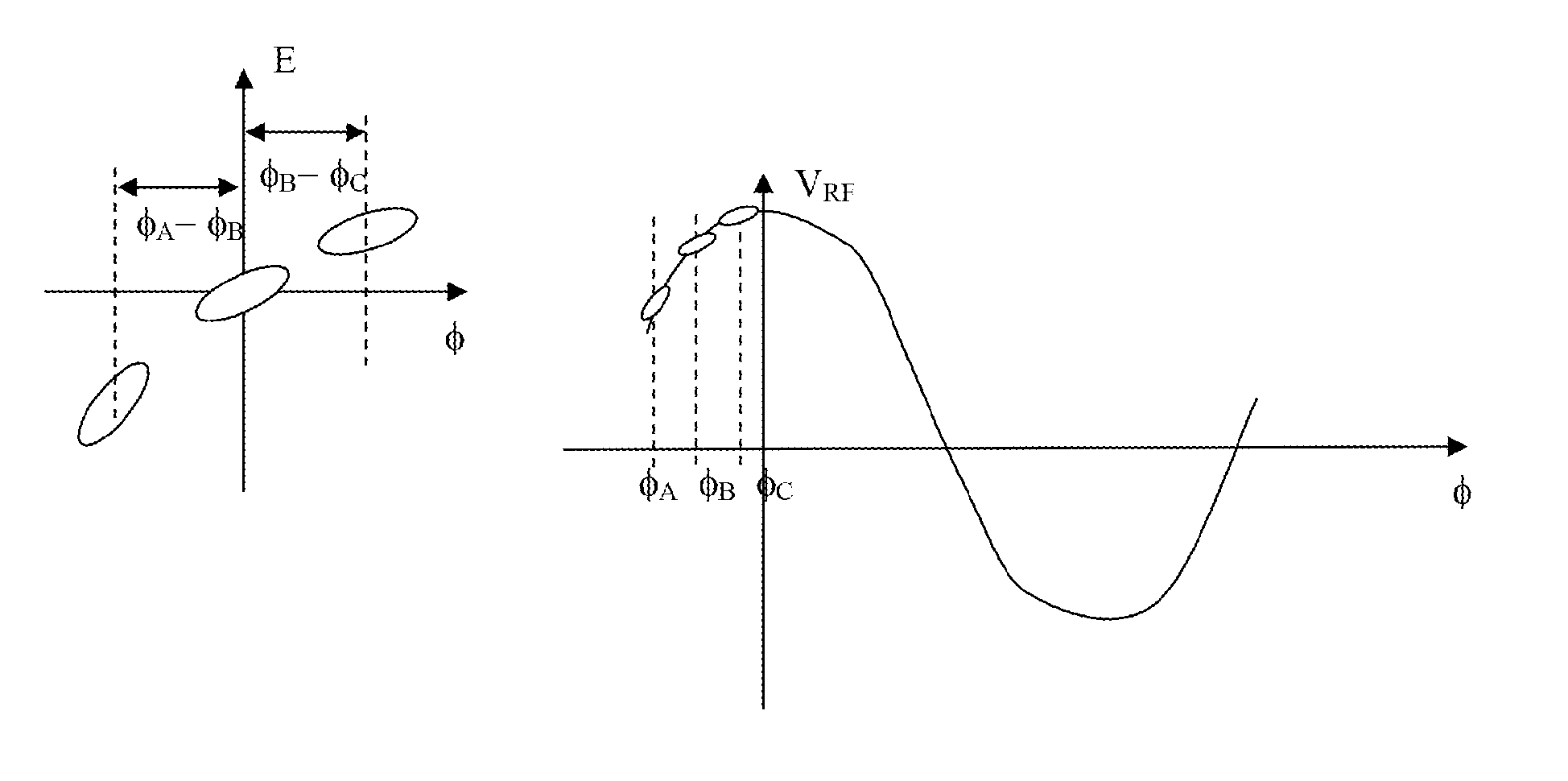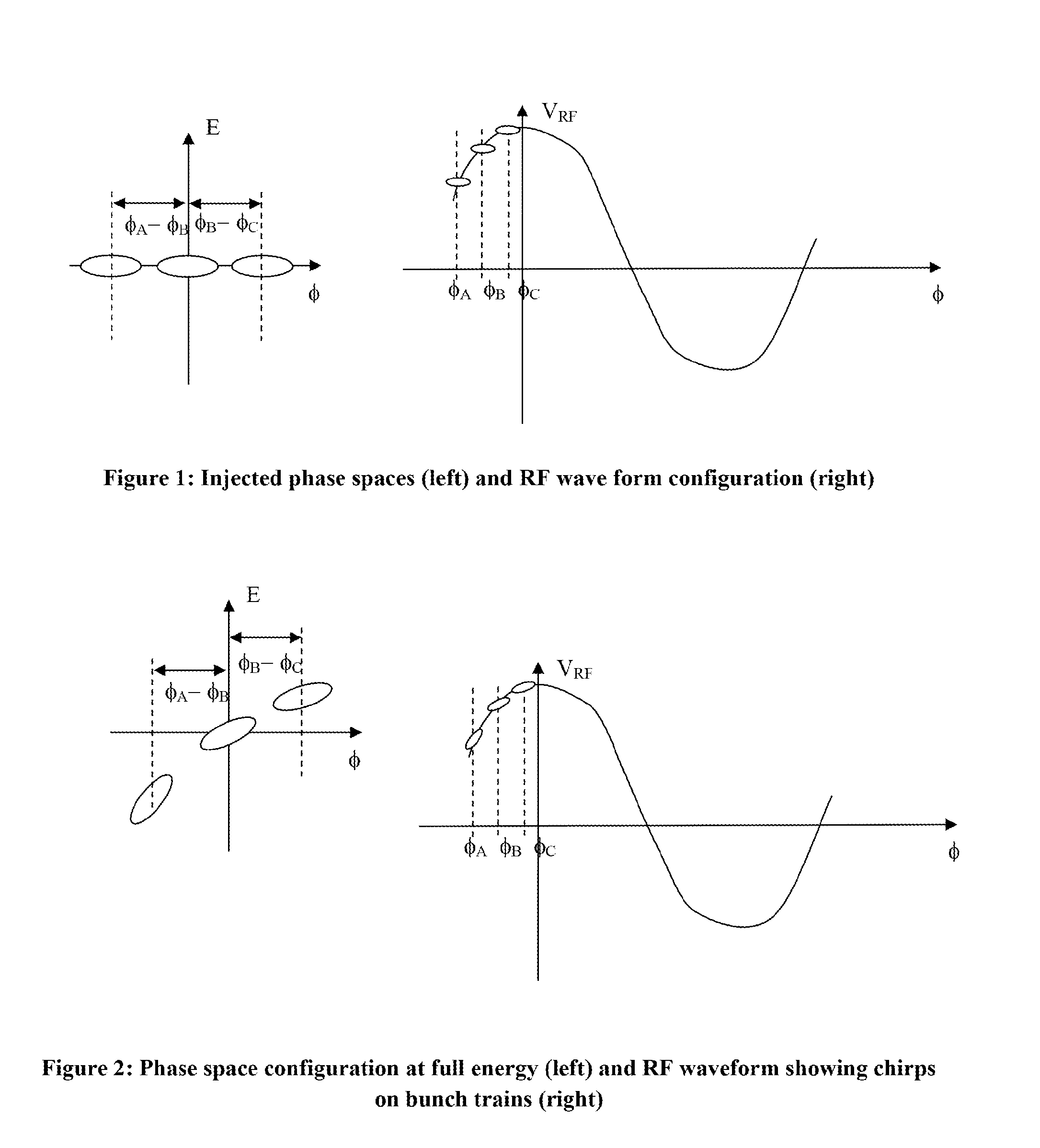FEL System with Homogeneous Average Output
- Summary
- Abstract
- Description
- Claims
- Application Information
AI Technical Summary
Benefits of technology
Problems solved by technology
Method used
Image
Examples
Embodiment Construction
[0014]The current invention includes a method of varying the output of a free electron laser (FEL) on very short time scales to produce a slightly broader, but smooth, time-averaged wavelength spectrum.
[0015]The method will, in a single beamline, provide independent control of multiple bunch trains and thereby allow rapid variation of output wavelength. This method is based on the nonlinear longitudinal matching methods and large-acceptance beam transport systems now in use at Jefferson Lab, Newport News, Va., and is motivated by the observation that—when using these methods—very modest changes in beam energy (well under 1 MeV) can turn lasing off and on by varying compressed bunch length. This demonstrates that easily generated and managed variations in phase / energy correlation across a bunch train is an effective control for laser turn-on / off.
[0016]The method is as follows:[0017]1. Inject into the accelerator a sequence of bunch trains (A, B, C, . . . ; A earliest in time, B follo...
PUM
 Login to View More
Login to View More Abstract
Description
Claims
Application Information
 Login to View More
Login to View More - R&D
- Intellectual Property
- Life Sciences
- Materials
- Tech Scout
- Unparalleled Data Quality
- Higher Quality Content
- 60% Fewer Hallucinations
Browse by: Latest US Patents, China's latest patents, Technical Efficacy Thesaurus, Application Domain, Technology Topic, Popular Technical Reports.
© 2025 PatSnap. All rights reserved.Legal|Privacy policy|Modern Slavery Act Transparency Statement|Sitemap|About US| Contact US: help@patsnap.com



